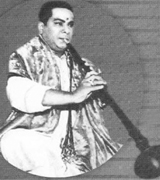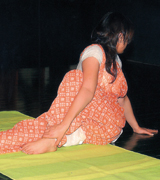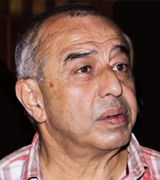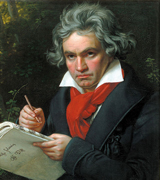COVER STORY
A meteor among nagaswaram stars
A. PITCHIAH

Nagaswara vidwan Karukurichi P. Arunachalam passed away in 1964 at the age of 43. Even during his short lifespan he had achieved great fame as a musical heir to his guru T.N. Rajarathnam (TNR).
In his series Karnataka Isai Vendargal in the Tamil weekly Kungumam, the late music critic Subbudu, placed nagaswara vidwan Karukurichi Arunachalam high in his list of leading Carnatic musicians, very close to his mentor T.N. Rajarathnam Pillai. Asserting that Karukurichi would have made history had he lived longer, he placed him in the genius class, along with TNR, MLV, S.G. Kittappa and M.K. Tyagaraja Bhagavatar. T.N. Seshagopalan has said that he never missed a Karukurichi concert in and around Madurai during his early days. Violinist M. Chandrasekharan has spoken of Karukurichi’s impact on his raga alapana. Clarionet vidwan A.K.C. Natarajan – a Sangita Kalanidhi like Seshagopalan and Chandrasekharan – refers to the special viraladi or fingering technique of Karukurichi. According to him, Karukurichi never had to strain himself to bring about the special melodic effects he created. He attributes it to Tamraparani tanneer, the water of the river that flows through Karuckurichi’s adopted district.
SPECIAL FEATURE
Movement for rehabilitation
DR. KANAK RELE

My long and often arduous journey through the world of differently-abled (Sruti recommends the usage “differently able” rather than “differently abled”) children taught me quite a few novel aspects of life and the passage that we must create, furrow by furrow, level by level to reach a state of being – physically and mentally where each individual finds his / her comfort zone. I observed, analysed and concluded how these children, though adversely positioned, tried (with our help) to create their own comfort zones. I am thankful today that the scientifically trained specialists, with whom I had the good fortune of interacting, introduced me to the world of ‘Movement’. They used my total absorption in dance to kindle my interest in human movement.
Dance is movement and it is the most beautiful movement in the world. To dance is not the exclusive prerogative of human beings. Other living beings also dance – birds, animals and even insects. Even Nature dances. But the human being has one great faculty which places him above other beings (including Nature) and that is his capacity to think and then dance. The other dances are impelled by necessity and genetics to be passed on by the law of nature. Man thinks and dances, uses his body not automatically or involuntarily, but intelligently. And since dance is human movement, the intellectual component assures a premier position in the scheme of human life.
INTERVIEW
“Time has been a major influence”
ASTAD DEBOO IN CONVERSATION WITH SHRINKHLA SAHAI

Astad Deboo is a maverick dancer. His 67th birthday falls on 13 July 2014. Over the years he has dodged neat categories and continues to explore new frontiers with his individualistic style. Minimalism, restraint and innovation have emerged as signature features of his choreography. Having worked extensively with different groups of performers, he was in Delhi recently with Rhythm Divine a performance with Thang-ta performers from Manipur. In this freewheeling conversation he reflects on his journey through the various rhythms of life and performance.
What was the inspiration for Rhythm Divine? How did the concept originate and how did you go about creating it?
I have been working with performers in Manipur for the past ten years. We started working with their living traditions and techniques and introducing layers of playfulness the and interaction. I would respond to their rhythm, they would follow my movement, and so on. We keep changing choreography, developing new works and revisiting earlier ones.
WINDOW TO THE WORLD
Poetry in music
MANOHAR PARNERKAR

(The Choral/ In D Minor / Opus 125 / In five movements/ Approximate playing time 66 minutes)
Beethoven’s Symphony No 9, the last he wrote, is one of the best known and most celebrated works of Western classical music. Popularly known as the Choral, the symphony is also sometimes called the Beethoven Ninth, or owing to its phenomenal popularity, simply the Ninth. It derived its moniker from the fact it was the first symphony in the history of music, to be partly sung. Although the work was originally commissioned by the Philharmonic Society of London, Beethoven dedicated it to King Friedrich Wilhelm III of Prussia (the son of Friedrich the Great). The first public performance was on 7 May 1824 at the Karntertor Theatre in Vienna and its third in 1825, in London.
This revolutionary work was the Mount Everest of Beethoven’s awesome symphonic achievement. It demonstrated, conclusively, that the composer, despite his deafness, continued to grow organically as a symphony writer till the end of his life. The symphony has come to represent one of the highest achievements of man, and can take its place alongside the finest works of Dante, Michelangelo, Shakespeare and Homer.


